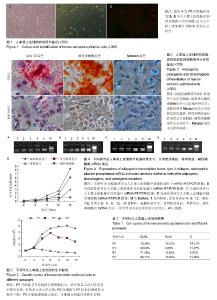| [1] Sakuragawa N,Thangavel R,Mizuguchi M,et al.Expression of markers for both neuronal and glial cells in human amniotic epithelial cells.Neurosci Lett.1996;209(1):9-12.[2] Sakuragawa N,Elwan M,Uchida S,et al.Non-neuronal neurotransmitters and neurotrophic factors in amniotic epithelial cells: expression and function in humans and monkey.JpnJ Pharmacol.2001;85(1):20-23.[3] Uchida S,Inanaga Y,Kobayashi M,et al.Neurotrophic function of conditioned medium from human amniotic epithelial cells.J Neurosci Res.2000;62(4):585-590.[4] Parolini O,Alviano F,Bagnara GP,et al.Concise review: isolation and characterization of cells from human term placenta: outcome of the first international workshop on placenta derived stem cells.Stem Cells.2008;26(2):300-311.[5] Strom SC,Skvorak K,Gramignoli R,et al.Translation of amnion stem cells to the clinic. Stem Cells Dev.2013;22 suppl 1:96-102.[6] Terada S,Matsuura K,Sakuragawa N,et al.Inducing proliferation of human amniotic epithelial (HAE) cells for cell therapy.Cell Transplant.2000;9(5):701-704.[7] Rooney I,Morgan B.Characterization of the membrane attack complex inhibitory protein CD59 antigen on human amniotic cells and in amniotic fluid.Immunology.1992; 76(4):541-547.[8] Rebmann V,Pfeiffer K,Grosse-Wilde H,et al.Detection of soluble HLA-G molecules in plasma and amniotic fluid.Tissue Antigens.1999;53(1):14-22.[9] Miki T,Lehmann T,Cai H,et al.Stem cell characteristics of amniotic epithelial cells. Stem Cells.2005;23(10):1549-1559.[10] Miki T,Lehmann T,Cai H,et al.Stem cell characteristics of amniotic epithelial cells.Stem Cells.2005;23(10):1549-1559.[11] Yang S,Sun HM,Yan JH,et al.Conditioned medium from human amniotic epithelial cells may induce the differentiation of human umbilical cord blood mesenchymal stem cells into dopaminergic neuron-like cells.J Neurosci Res.2013;91(7): 978-986.[12] Okawa H,Okuda O,Arai H,et al.Amniotic epithelial cells transform into neuron-like cells in the ischemic brain.Neuroreport.2001;12(18):4003-4007.[13] Takahashi N,Enosawa S,Mitani T,et al. Transplantation of amniotic epithelial cells into fetal rat liver by in utero manipulation.Cell Transplant.2002;11(5):443-449.[14] Miki T,Grubbs B.Therapeutic potential of placenta-derived stem cells for liver diseases: Current status and perspectives.J Obstet Gynaecol Res.2014;40(2):360-368.[15] Marcus A,Coyne T,Rauch J,et al.Isolation, characterization, and differentiation of stem cells derived from the rat amniotic membrane.Differentiation.2008; 76(2):130-144.[16] Fliniaux I,Viallet JP,Dhouailly D,et al.Transformation of amnion epithelium into skin and hair follicles. Differentiation. 2004;72(9-10):558-565.[17] He Y,Alizadeh H,Kinoshita K,et al.Experimental transplantation of cultured human limbal and amniotic epithelial cells onto the corneal surface.Cornea.1999; 18(5): 570-579.[18] Wei J,Zhang T,Nikaido T,et al.Human amnion-isolated cells normalize blood glucose in streptozotocin-induced diabetic mice.Cell Transplant.2003;12(5):545-552.[19] Singh M,Ananthula S,Milhom DM,et al.Osteopontin: a novel inflammatory mediator of cardiovascular disease.Front Biosci. 2007;1(1):214-221.[20] Diao H,Iwabuchi K,Li L,et al.Osteopontin regulates development and function of invariant natural killer T cells.Proc Natl Acad Sci USA.2008;105(41):15884-15889.[21] Holm L,Bockermann R,Wellner E,et al.Side-chain and backbone amide bond requirements for glycopeptides stimulation of T cells obtained in a mouse model for rheumatoid arthritis.Bioorg and Med Chem.2006; 14(17): 5921-5932.[22] 曹慧,张忠慧,许时婴.鸡胸软骨酶解产物的表征及对类风湿关节炎大鼠的免疫调节作用[J].食品科学,2012,33(3):243-247.[23] Armani A,Mammi C,Marzolla V,et al.Cellular models for understanding adipogenesis, adipose dysfunction, and obesity. J Cell Biochem.2010;110(3):564-572.[24] Lehrke M, Lazar MA. The many faces of PPARgamma. Cell. 2005;123(6):993-999.[25] 蒋金航,马云,王新庄.PPARγ基因调控脂肪细胞分化的研究进展[J].中国畜牧杂志,2014,50(9):91-95.[26] Jin H,Yang Q,Ji F,et al.Human amniotic epithelial cell transplantation for the repair of injured brachial plexus nerve: evaluation of nerve viscoelastic properties. Neural Regen Res. 2015;10(2): 260-265.[27] Enosawa S,Sakuragawa N,Suzuki S.Possible use of amniotic cells for regenerative medicine.Nihon Rinsho.2003;61(3):码396-400.[28] Kakishita K,Elwan M,Nakao N,et al.Human amniotic epithelial cells produce dopamine and survive after implantation into the striatum of a rat model of Parkinson's disease: a potential source of donor for transplantation therapy.Exp Neurol.2000; 165(1):27-34.[29] Sankar V,Muthusamy R.Role of human amniotic epithelial cell transplantation in spinal cord injury repair research. Neuroscience. 2003;118(1):11-17.[30] Kakishita K, Nakao N,Sakuragawa N,et al.Implantation of human amniotic epithelial cells prevents the degeneration of nigral dopamine neurons in rats with 6-hydroxydopamine lesions.Brain Res.2003;980(1):48-56.[31] Heeger P.Amnion and chorion cells as therapeutic agents for transplantation and tissue regeneration: a field in its infancy. Transplantation.2004;78(10):1411-1412.[32] Bilic G,Zeisberger S,Mallik A,et al.Comparative characterization of cultured human term amnion epithelial and mesenchymal stromal cells for application in cell therapy.Cell Transplant.2008;17(8):955-968.[33] Giachelli CM,Bae N,Almeida M,et al.Osteopontin is elevated during neointima formation in rat arteries and is a novel component of human atherosclerotic plaques. J Clin Invest. 1993;92(4):1686-1696. |

